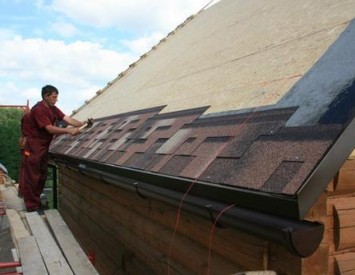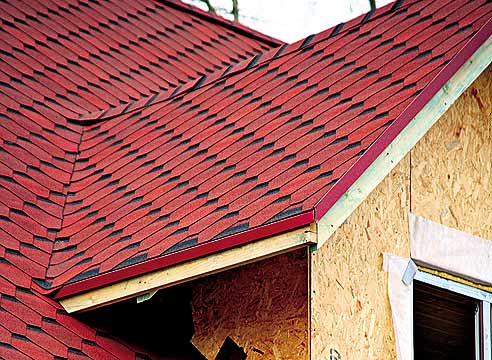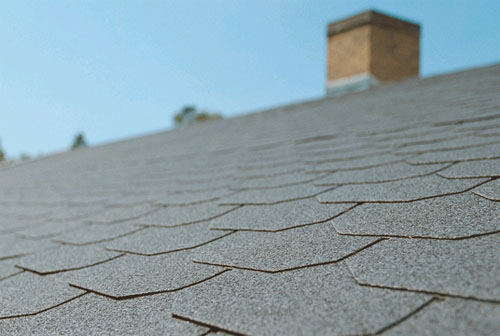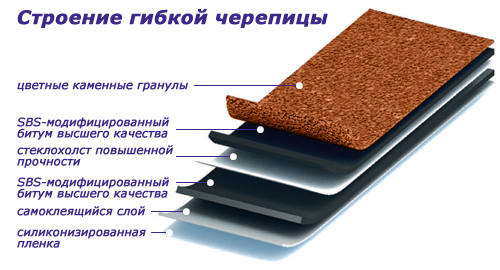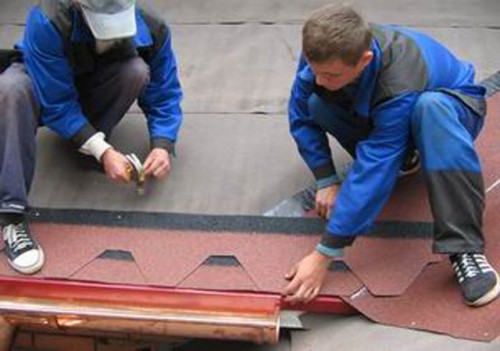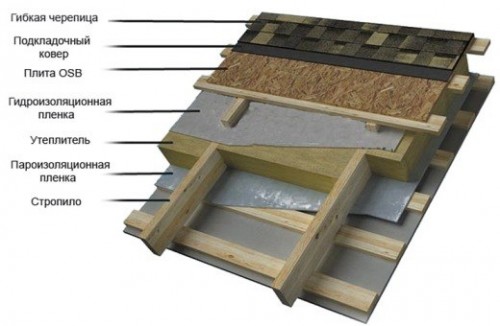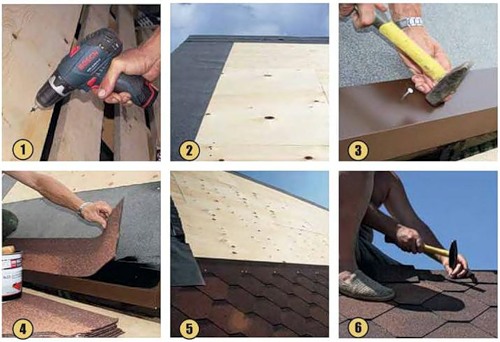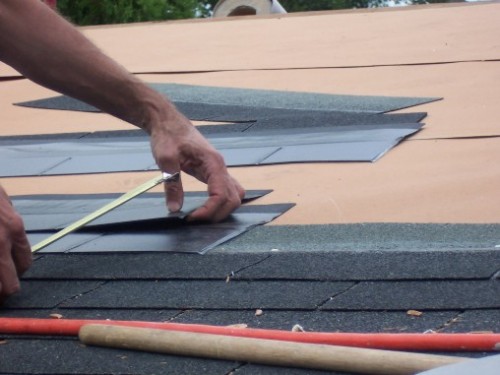The roof is a kind of "umbrella" of the dwelling. The microclimate of the house, its convenience and comfort depends on its quality. In this article, consider coating the roof with soft tiles.
Content
What does the result of the roof cover look like a tile, illustrate the photo below:
Of course, having preferred this material, you should ask how much it will cost to cover the roof with tiles. The price will depend on a number of factors, such as the cost of materials, remuneration of specialists, etc. However, do not rush to rejoice if you have found a company that has declared a low cost of roof covering with a tile. Ask for a license to carry out such work, learn about already completed projects, talk with the happy owners of the new roof.
With your own hands, the roof coating is the task is quite fulfilling if you have experience with roofing materials. Although, it will be more reliable, to attract qualified specialists.
To begin with, it would be nice to figure out what a flexible tile consists of.
The structure of the soft tile
- Keramzite, silicon sand granulate.
- Bitumen is modified or oxidized.
- Fiberglass.
- Silicone or rubber concrete layer.
- Self -adhesive layer.
- The lower special film, which is easily peel off.
Gont is a sheet consisting of 3-4 “tiles”. With proper laying, the hounds are, as it were, they are fused under the influence of solar heating, forming a hermetic protective layer for the roof. To achieve the optimal effect when coating the roof tiles, a clear scheme is usually involved, for example, laying racetracks in six rows. The description can easily be found on the Internet.
Advantages of soft tiles
- Small weight.
- Flexibility.
- Strength.
- Economy.
- Water resistance.
- The possibility of arranging roofs of non -standard geometry.
- High resistance to mold and fungus.
- The permissible environmental temperature range is from -50C ° to +100C °.
The coating of the roof with soft tiles the more easier and more effective, the more accurately the instructions are observed, and the more clearly the composition of the classical, the so -called "Roofing Pie."
The standard composition of the roof
- Basis (crate).
- Rafters.
- Vapor barrier protection.
- Thermal insulation system.
- Waterproofing layer.
The main layer (crate) should be strong, stable and well ventilated. The permissible humidity level is up to 20%.
The most common raw materials used to create the base of the roof
- Oriented-brown plate (OSB).
- Shpunt or rubber boards.
- Sheets of plywood moisture -resistant.
- Cement-brown slabs (high-density cement fibrilite, etc.).
Nuance! Using trimming boards, try to place them in such a way that the roundness of the annual rings on the cuts is directed up.
Along with this, today the method of combining the leaf base and the plank crate is widely used today. This combination provides the best ventilation in space under the roof.
Auxiliary elements that are needed for the effective device of the roof
- Cornice stripes.
- Ventilation pipes.
- Hooks or nails for work with roofing materials.
- Ridge elements.
- Raw materials for the lining layer.
Subtleties of roof arrangement by laying flexible tiles
- The angle of inclination of the roof should be more than 12 °. In case the inclination is less, then before laying the tiles it is necessary to stretch the gasket carpet at the entire base of the roof. With a slope of more than 18 °, such a gasket is best done only at the ends, skates and in the places of the roofing of the roof with the walls.
- It is desirable to lay such a roof at a temperature of +5 ° C and more. At low temperatures, a high level of waterproofing is not achieved.
Roof coating technology with soft tiles
- First of all, you should create an even, elastic and dry base. Places of the docks should fall into the backs. The ideal gap between the ventilation boards is 5 mm.
- Ventilation under the roof is provided by the presence of ventilation openings. The supply opening is located at the bottom of the undercarbon space, and the exhaust - at the top. The openings protect, as a rule, with a stainless steel grid from insects and birds.
- As a substrate under the soft tile, a lining carpet is used.
- The tiles were flooring. The styling itself is a difficult matter, requiring certain skills, accuracy and accuracy. But, as you know, Oknovka is a profit. There are some nuances of the implementation of this process that it is advisable to get acquainted with work.
The tricks of styling
- Tiles from different parties can be of different shades. In order to soften this visual disadvantage when masonry, you need to alternate hounds from different packages.
- Cutting the tiles right at the top, it is advisable to make a substrate from the board so as not to cut the lining.
- In order for the roof not to pass moisture, it is necessary to strictly observe the priority of laying the tiles. The process begins with the bottom of the roof. Attach tile horses using long nails (25-30 mm) with wide hats. The next row of tiles should cover the mounts of the lower row.
Nuance! To increase tightness, the place of overflow can be treated with bitumen mastic.
You can clearly study the intricacies of the roof covering technology with a tile by watching a video:
